Non-urgent government operations are closed December 24 to January 1, reopening January 2. View available services during this period.
Plan your next adventure: Download Alberta’s Public Land Trail Guide.
Public Lands Camping Pass required
A Public Lands Camping Pass is required to random camp on public land along the eastern slopes of the Rocky Mountains.
Overview
There are plenty of opportunities for non-motorized recreation activities on public land (within and outside of Public Land Use Zones, and on provincial trails) and in some provincial park sites.
There are rules in place for non-motorized recreation on public land. Explore the activities below to learn more.
Non-motorized activities
-
Canoeing and kayaking
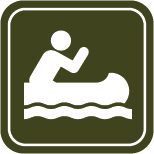
Best practices
- Respect the shorelands – avoid launching or landing, or both, in soft or marshy areas.
- Don't disturb wildlife – nesting waterfowl are particularly vulnerable to disruption.
- Manage your waste – avoid urinating or defecating, or both, directly into water.
Learn rules and more information about boating.
-
Climbing and caving
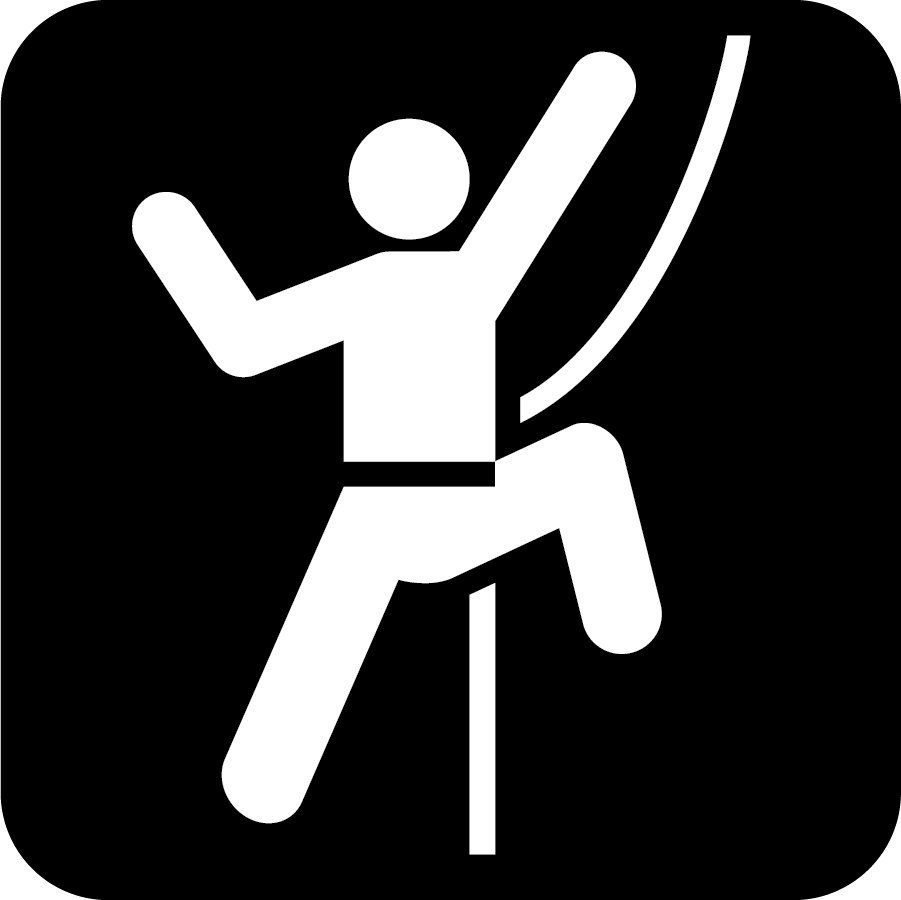
Rules and regulations
- Climbing and caving is permitted, unless the area is closed. Climbers should use existing trails for approaches.
- Wapiabi Cave is currently closed. Learn more about Public land trail and area closures.
- Use existing or removable climbing equipment and protection.
- Collecting, destroying and removing objects of geological, ethnological, and historical interest are prohibited. This includes causing any damage to petroglyphs.
- Avoid anchoring to and stepping on vegetation and exposed roots to minimize bark damage.
- Avoid climbing in areas with nesting birds or other wildlife. During nesting season, voluntary route closures may be in place at certain climbing areas to protect raptors.
Best practices
- When climbing or caving, be sensitive to erosion on steep approaches and in fragile alpine areas.
- Alberta’s caves are an important home for many of the province’s hibernating bats that are under threat from white-nose syndrome. Cavers should take precautions to prevent the unintended spread of this disease. For more information, visit White-nose syndrome. Approach with caution – be sensitive to trail erosion on steep approaches and fragile alpine areas.
- Don't mark the bark. Avoid anchoring to – and stepping on – exposed roots and vegetation to minimize bark damage.
- Watch for wildlife – avoid disturbing nesting birds, bats and other creatures.
- Behave in the caves – cave formations and life are vulnerable to outside contamination. Avoid touching anything you don't have to.
- Connect with the Alpine Club of Canada to get involved in a local climbing community at Alpine Club of Canada.
-
Cycling and e-biking
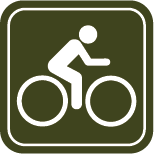
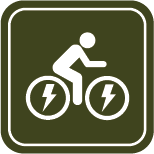
Rules and regulations
- Use of bicycles is permitted. Some designated trails may restrict biking, or specific types of biking (e-bikes or fat bikes) as indicated by signs or publications.
- Always ride in control.
- Keep wheels out of the water, and off the bed and shore of waterbodies and wetlands unless using designated water crossing.
- Building ramps and permanent structures or modifying trails is prohibited except where authorization has been granted by the Government of Alberta.
- If biking on roadways, follow the rules of the road.
Best practices
- Yield to other non-motorized users.
- Helmets are required for all users.
- Clean, drain and dry your gear to prevent the spread of invasive species and fish diseases, which can be carried on any gear or equipment that comes in contact with water. Always clean off mud and plants, drain all standing water and dry gear and equipment in-between trips.
- To get involved in a local bicycling community, connect with the Alberta Bicycle Association.
-
Fishing
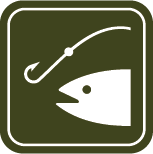
Rules and regulations
- Sportfishing is allowed on public land, unless otherwise indicated. Know and follow current sportfishing regulations.
- Know and follow provincial Sportfishing Regulations, which outlines detailed info on season and catch limits for all of Alberta’s waterbodies.
- If you are an Alberta resident between the ages of 16 and 65, you must obtain an Alberta angling license to fish. Non-residents must obtain an Alberta angling license regardless of age.
Best practices
- Know how to identify Alberta’s fish species, particularly native trout. If you don’t know, let it go. Learn more at:
- Alberta’s Fish Species.
- Keep fish wet. Be ready to release your catch quickly and safely to give fish the best chance of survival.
- Bull trout are a native trout species that is threatened in Alberta. They have pale spots on their
- bodies and no dark markings on the dorsal fin or tail. “No black, put it back,” is a helpful reminder that there is a zero-possession limit (catch and release only).
-
Firearms and hunting

Keeping yourself and others safe should be your first priority when using firearms for hunting or recreational shooting (such as target shooting). Recreational shooters are responsible for knowing and following the rules for firearm use. This includes following all signs, posted notices, publications and any direction provided by an officer.
All firearm users must be aware of federal laws surrounding the acquisition, possession, transportation and use of weapons and ammunition. For further information, contact the Canadian Firearms Centre at 1-800-731-4000 or visit the centre’s website.
Rules and regulations
- Hunting is permitted in accordance with provincial hunting regulations. Alberta’s Guide to Hunting Regulations contains detailed information about hunting licenses, hunting regulations and wildlife management units.
- If you are an Alberta resident that is 10 years of age or older, you must obtain an Alberta hunting licence to hunt. Non-residents must obtain a license regardless of age.
- Recreational shooting is allowed on public land with the following restrictions:
- To protect the safety of other land users, you are not allowed to shoot within public land recreation areas, wildlife sanctuaries or corridors on public land.
- You must not discharge your firearm in a manner that endangers people.
- You are prohibited from discharging your firearm within 400 metres of a provincial trail tread, unless hunting or trapping as defined by the Wildlife Act.
- For the safety of all users, you are not allowed to shoot in the firearm restriction zones within the McLean Off Highway Vehicle and Sibbald Snow Vehicle Public Land Use Zones.
- You are not allowed to shoot from vehicles.
- Shooting, ignition or detonation of exploding targets and fireworks are not permitted on Crown land or private land within the Forest Protection Area.
- You cannot discharge a firearm or bow and arrow from, or cause a projectile to pass along or across:
- A provincial highway including all primary and secondary highways.
- A road that is paved, oiled, graded or regularly maintained. Exceptions include:
- The road is held under any active disposition under the Public Lands Act.
- An order under the Surface Rights Act.
- A person is hunting game birds with a shotgun under the authority of a licence.
- Clean up after you shoot, and properly dispose of all cartridges, clays, targets and waste. Avoid using targets that shatter, making them difficult to clean up.
- Recreational shooting must not occur between one-half hour after sunset and one-half hour before sunrise.
- Shooting at or attaching targets to trees are not allowed.
General firearms safety
- Be aware of other users in the area. Check area near or behind target before firing.
- Choose a site far away from roads, trails and campsites.
- Control muzzle direction at all times.
- Keep finger off trigger and out of the trigger guard except when firing.
- Unload firearm when not in immediate use.
- Keep firearm action open when handling.
- Use your safety but never rely on it.
- Wear eye and ear protection at all times when shooting – even outdoors!
- Ensure your firearm is well maintained and regularly serviced.
- Be extra cautious when shooting at or towards flat or hard surfaces.
- Be extra cautious when shooting at or towards water.
- Identify target before firing and be sure before you shoot and know what is behind the target.
- Choose a site with a safe backstop – an area behind the target that will stop any bullets that pass through or around your target, such as a natural slope or steep hill.
- Choose a backstop or target that will not cause a bullet to ricochet.
- Use proper ammunition for target and conditions.
Best practices
The Alberta Hunter Education Instructor’s Association provides formal trailing in hunting and fishing education. Learn more about their programs at their website.
- Hunting is permitted in accordance with provincial hunting regulations. Alberta’s Guide to Hunting Regulations contains detailed information about hunting licenses, hunting regulations and wildlife management units.
-
Hiking
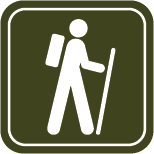
Rules and regulations
- Hiking is permitted unless access to an area is closed.
- Pack out what you pack in. Take garbage and waste with you and properly dispose of it at home.
- Do not enter closed areas or closed trails.
- If you have a pet, keep it under control. Obey signs and publications for where pets need to be on a leash or where prohibited.
Best practices
- Research your route and check the weather forecast.
- Pack maps, guidebooks or a GPS file of the route.
- Make a trip plan and let a friend or family member know where you are going and when you plan to return.
- Don't mark the bark. Step over, rather than on, exposed roots to prevent damage to bark.
- Spread out in alpine areas that don’t have an established trail.
- Avoid travelling single file to minimize trampling of fragile vegetation.
- Remember that cellular service is not available in all areas. Carry a satellite communications device in addition to a cellphone in case of an emergency.
- Pack appropriate equipment including proper footwear, extra layers of clothing, protection from the elements, a light source, adequate food and water, and an emergency shelter.
- Carry bear spray year-round and know how to use it.
Scrambling
- A 'scramble’ is a cross between a hike and a climb, where you may need to use your hands in addition to your feet to climb up rocky, steep or rough terrain.
- Use these trails at your own risk, and within the skill and ability of everyone in your group.
- If you are new to scrambling, start with easy trails and increase your level of difficulty with experience.
- Scrambling does not necessarily require climbing equipment, like a rope or harness, but some people may be more comfortable with additional protection.
- Sturdy footwear and a helmet are recommended.
-
Horse-back riding and equestrian users
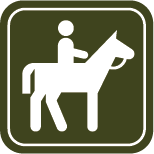
Rules and regulations
- Use of horses is permitted unless access to an area is closed. Some trails may restrict the use of horses, as indicated by signs or publications.
- Use established routes.
- Do not tie horses to live vegetation.
- Permits to graze horses for recreational use may be required, particularly in areas such as the Forest Reserve where forage has been allocated for livestock grazing.
- For overnight trips, manure and excess feed must be removed from your campsite before leaving and disposed of properly.
Best practices
- Avoid grazing on trails, as much as possible.
- Use caution when passing other trail users, especially hikers.
- Avoid soft and marshy edges when watering horses.
- Tether and graze horses at least 100 metres from lakes or streams to prevents water contamination and erosion of shorelines caused by trampling and overgrazing.
- High-line horses to prevent damage to roots.
- Use ropes or approved electrical wire to make corrals.
- Supplemental feeds such as hay, grain pellets and alfalfa cubes can be used to prevent overgrazing and reduce competition with wildlife for food. Using hay as supplemental feed may potentially introduce noxious weeds into the backcountry; grain or alfalfa pellets are preferable Supplemental feed should be stored in sealed containers to prevent tampering by wildlife.
- Salt should be kept in a waterproof container and elevated above ground; this prevents leakage into the soil which can attract wildlife.
-
Snowshoeing, skiing, snowboarding and split-boarding
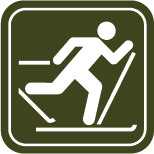
Rules and regulations
Winter activities, such as snowshoeing, cross-country skiing, and backcountry skiing, snowboarding and split-boarding is permitted unless access to an area is closed. Some trails may restrict certain activities, as indicated by signs or publications.
Best practices
- Know the skills and abilities of your group.
- Check the weather forecast and snow conditions before your trip at Avalanche Canada.
- Ensure adequate snow cover—avoid travelling on top of trees and other vegetation that may be broken or damaged by direct contact with skis.
- Avoid disrupting alpine wildlife.
- Use this Winter Recreation checklist to help you prepare for your trip.
-
Use of drones

Rules and regulations
- Use of drones is permitted on public land unless area is closed for public safety, in accordance with Canadian Aviation Regulations.
- Drones, unmanned Aerial Vehicles (UAVs) or Remotely Piloted Aircrafts (RPAs) are considered aircraft and are air space users.
- Anyone flying a drone on Crown land should ensure they follow all standards for aircraft regarding wildlife harassment under Alberta’s Wildlife Act.
-
Wildlife viewing
Rules and regulations
- Enjoy wildlife from a respectful distance.
- Do not feed or approach wildlife.
Best practices
- Carry bear spray year-round within reach, and know how to use it.
- Stay alert and be aware of your surroundings.
- Be BearSmart.
Plan your trip
-
Step 1. Plan your route
- Non-motorized activity is generally permitted on non-motorized trails and mutliuse trails. Find trails and areas open for your activity on the Provincial Recreation Map.
- Be aware of Public land closures and advisories.
- Download directions to the trailhead and trail maps before heading out.
- Non-motorized recreation is allowed in all 18 of Alberta’s Public Land Use Zones (PLUZ). Visit the pages below for area-specific rules, to learn where the approved trails are and to download georeferenced maps to use offline during your trip.
- Northern Alberta
- Central Alberta
- Southern Alberta
If you are looking to access agricultural public land, it is important to contact the leaseholder prior to accessing agricultural public land for recreation.
-
Step 2. Be safe. Be responsible.
- Check the weather.
- Check for fire advisories and bans.
-
Step 3. Know the rules
- It is your responsibility to know the regulations that apply to the land you are travelling on and your activities. See the above non-motorized activities for activity-specific rules and best practices.
- Follow all signs, posted notices and department publications.
- Travel only on trails or in areas that are open for your activity.
- If marking your route, do not mark or blaze your trail with axes or paint. If using flagging, remove it when you leave.
- Leave nothing behind. Take all garbage and waste with you, and properly dispose of it.
- Leave all artifacts where you found them.
- Authorization is required to cut down live trees and vegetation.
- Respect wildlife.
- Report public safety incidents, illegal activity and enforcement concerns to 310-LAND(5263).
- Stay off private and leased land unless permitted, and steer clear of pipelines. Contact leaseholder prior to travel on leased land. Learn more at Recreation on agricultural public land.
-
Step 4. Plan ahead and be prepared
- Plan your route on designated trails. Check for activity timing restrictions for the trail or area you are visiting.
- Know the skill and ability of your group.
- Never travel alone. Make sure someone knows where you are going and when you expect to return.
- Share the trail. Yield to non-motorized recreationists like hikers, cyclists and equestrian users. Hold up fingers to indicate how many are in your group when passing other trail users.
- Leave all gates and fences as you find them, open or closed.
-
Step 5. Reduce your impact
Together with thousands of other users, your actions impact and disturb the landscape, vegetation, wildlife, waterways and other users. Irresponsible or unmanaged use, or both, can contribute to:
- impact on others experiences
- loss of vegetation
- soil compaction, contamination and erosion
- transfer of weeds
- water contamination
- wildfire
- wildlife disruption
By acting responsibly, we collectively maintain our access privileges and preserve our public lands for future generations.
- Travel on trails and park in areas with the hardest, most durable surface.
- Travel in small groups to minimize soil compaction and vegetation damage.
- Avoid wet, sensitive and alpine areas whenever possible.
For more information on minimizing your impact while enjoying the outdoors visit Leave No Trace Canada.
Contact
For information or to report any public safety incidents, illegal activity or enforcement concerns during your trip, call 310-LAND (5263).
Hours: Available 24 hours a day, 7 days a week
Toll free: 310-LAND
Toll free (outside of Alberta): 1-833-310-5869